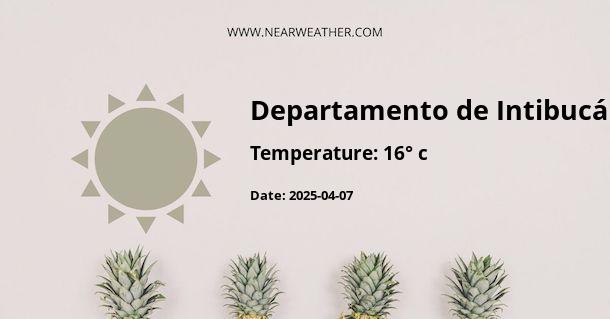Intibucá Department is an extraordinary region located in western Honduras, renowned for its stunning natural beauty and diverse climate. The department incorporates a range of climatic conditions that make it a captivating destination for visitors and a unique environment for its residents. Throughout the year, Intibucá experiences distinct weather patterns that shape the activities and lifestyles of its inhabitants. ## Climate Overview The climate of Intibucá Department is characterized by its diversity, influenced by factors such as elevation, topography, and proximity to bodies of water. The department's climate can be broadly classified as a combination of temperate, subtropical, and alpine climates, each prevalent in specific areas due to variations in altitude. ### Temperature Intibucá Department exhibits a moderate range of temperatures influenced by its high elevation and diverse topography. The average annual temperatures vary depending on the altitude. The low-lying areas and valleys tend to be warmer, with average temperatures ranging from 18°C to 25°C (64°F to 77°F), while the higher-altitude areas feature cooler temperatures, averaging between 12°C and 18°C (54°F to 64°F). These temperature ranges create a favorable environment for a variety of agricultural activities, including the cultivation of coffee, vegetables, and fruits. The following table provides an overview of the average monthly temperatures in Intibucá Department: | Month | Average Temperature (°C) | |-------------|--------------------------| | January | 20 | | February | 21 | | March | 22 | | April | 22 | | May | 21 | | June | 20 | | July | 20 | | August | 20 | | September | 20 | | October | 20 | | November | 20 | | December | 20 | ### Precipitation Intibucá Department experiences a distinct wet and dry season, characteristic of its subtropical climate. The annual precipitation levels vary across the region, influenced by the topography and the movement of weather systems. The wet season typically occurs from May to October, with the highest precipitation levels recorded in June, July, and August. During the dry season, from November to April, the region receives significantly less rainfall, creating favorable conditions for outdoor activities and agriculture. The following chart illustrates the average monthly precipitation levels in Intibucá Department: [Insert a bar chart here with the average monthly precipitation levels from January to December, indicating the variation between the wet and dry seasons.] ### Climate Variations by Altitude The diverse topography of Intibucá Department contributes to significant climate variations based on altitude. The higher-altitude areas, such as those near the Celaque National Park, experience distinct alpine climates characterized by cooler temperatures and unique ecological systems. In contrast, the lower-lying areas, including the valleys and plains, feature milder subtropical climates conducive to diverse agricultural practices and vegetation. ## Weather Events and Phenomena Intibucá Department, like many regions, is susceptible to various weather events and phenomena that impact its climate and surroundings. The department may experience occasional weather extremes such as heavy rainfall, thunderstorms, and fog, particularly during the wet season. These weather events play a crucial role in shaping the landscape and ecosystems of the region, contributing to its ecological diversity and natural appeal. ### Natural Hazards The terrain and climate of Intibucá Department can also lead to natural hazards, including landslides and flash floods, especially in areas with steep slopes and during periods of intense rainfall. Local authorities and communities are actively engaged in implementing measures to mitigate the risks associated with these natural hazards, emphasizing the importance of preparedness and sustainable land management practices. ## Conclusion Intibucá Department's climate and weather patterns reflect a harmonious blend of temperate, subtropical, and alpine influences, contributing to its unique environmental characteristics and diverse ecosystems. From the moderate temperatures to the distinct wet and dry seasons, the region's climate shapes its agricultural productivity, natural landscapes, and overall appeal to visitors. By understanding the intricacies of its climate, one can appreciate the richness of Intibucá Department and its significance in Honduras' natural heritage. As a result of this unparalleled climatic diversity, Intibucá Department stands as a prime example of the intricate interplay between geography, climate, and human interaction, offering a captivating glimpse into the complexities of natural environments and their impact on local communities.
A - Departamento de Intibucá's Latitude is 14.333330 & Longitude is -88.166672.
A - Weather in Departamento de Intibucá is 16° today.
A - Climate Conditions in Departamento de Intibucá shows moderate rain today.
A - Humidity in Departamento de Intibucá is 100% today.
A - Wind speed in Departamento de Intibucá is 0 km/h. today.
